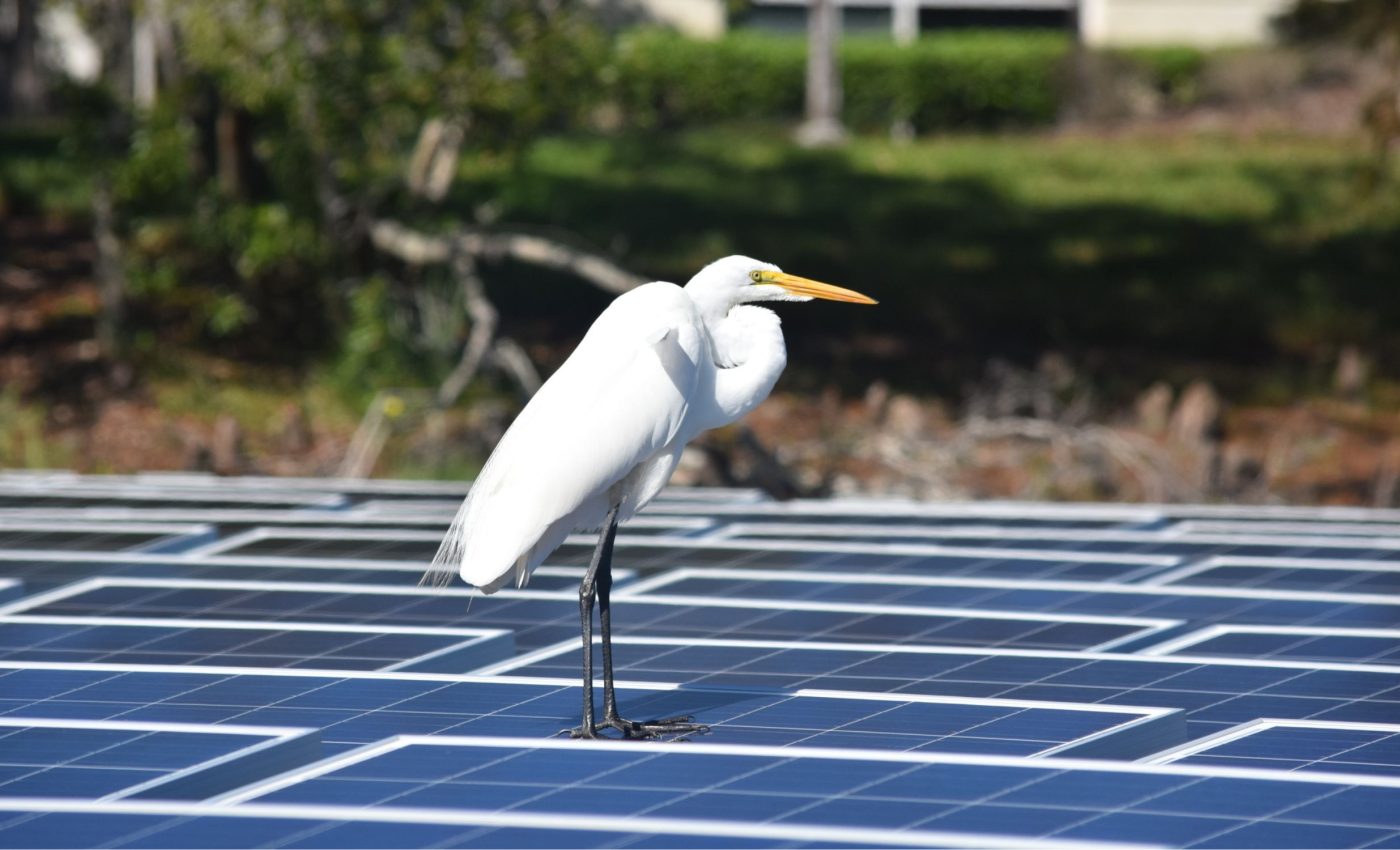
Floating solar panels affect bird habitats in unexpected ways
Floating photovoltaics (FPV), or “floatovoltaics,” are spreading across water bodies worldwide. From California’s vineyards to China’s massive energy projects, these solar systems glide atop irrigation ponds, reservoirs, and wastewater treatment plants.
They produce clean energy without consuming precious land, a seemingly perfect solution in a space-constrained world.
But the water beneath these panels isn’t empty. It teems with life. Birds drift, dive, nest, and hunt in these waters. As FPV systems expand, they introduce a new dynamic to these habitats – and nobody knows yet what the consequences might be.
Floating solar and bird habitats
A recent study from the University of California, Davis, published in the journal Nature Water, raises a vital question: Can renewable energy and wildlife coexist without collateral damage? The researchers, part of the UC Davis Wild Energy Center, are among the first to examine how waterbirds respond to FPV systems.
“That’s why it’s so important to understand how waterbirds are going to respond to floating solar and if there is the possibility for conservation concessions at new floating solar facilities,” said Elliott Steele, a postdoctoral scholar with the UC Davis Wild Energy Center within the Energy and Efficiency Institute.
Steele’s words are urgent. Bird populations are plummeting. Habitat loss, climate change, pollution, and avian influenza have combined into a perfect storm of threats. If floating solar disrupts waterbird behavior, it could exacerbate an already dire situation.
Bird responses to floating solar systems
Imagine a black-crowned night heron standing motionless on a solar panel before dawn. Below, cormorants dart through the water, jostling for a place to perch. A black phoebe builds a nest beneath the panels, sheltered but close to human-made structures.
These are not imagined scenes. During their fieldwork, the UC Davis researchers observed all these behaviors. Birds are not just interacting with FPV systems — they are adapting to them, sometimes in unexpected ways.
“Our team has been documenting such a diversity of bird behavior with floating PV, so we immediately knew this was a very important interaction, especially given the precipitous decline in waterbird numbers globally,” said senior author and UC Davis Professor Rebecca R. Hernandez.
Benefits and risks of floating solar
Renewable energy projects have not always considered wildlife. Now, as FPV systems expand, researchers are determined not to repeat past mistakes. The UC Davis team identified five areas demanding urgent study.
First, the researchers are exploring how waterbirds interact with FPV structures, questioning whether these birds use the solar panels as nesting sites, hunting perches, or safe resting places.
In addition, they are investigating the direct and indirect effects of FPV systems on waterbirds. While a panel may provide shelter to one species, it may simultaneously deter another.
The team is considering how conservation strategies can be tailored to specific sites, regions, and seasons, recognizing that bird populations vary significantly in their behaviors and needs.
Furthermore, they are examining how best to design monitoring systems at FPV sites. Should they rely on cameras, sensors, or traditional bird counts to collect data effectively?
The researchers are also assessing the potential for pollutants to be released from FPV systems. If such contamination occurs, they aim to determine what can be done to mitigate the risks to aquatic and avian life.
Rethinking renewable energy design
Study co-author Emma Forester is a Ph.D. candidate with the UC Davis Land, Air and Water Resources department and the Wild Energy Center.
“There are some things we wished we’d known before other kinds of renewable energy were developed,” said Forester.
“While we’re at this critical threshold of renewable energy development, we want to put more thought into the design that can benefit birds and other wildlife as we go forward.”
The balancing act: Energy vs. ecology
Floating solar systems present a compelling case for water conservation. They can reduce evaporation by shading the water surface, an added benefit in drought-prone areas. But there’s a catch.
While some birds, like the black-crowned night heron, seem to thrive on the panels, others might not. Researchers observed birds using FPV systems in various ways – nesting, perching, feeding – but the long-term impacts remain unclear.
And then there’s pollution. Solar panels are not inert objects. As they age, they can degrade, releasing chemicals into the water. What happens to the fish, algae or the birds? These questions linger, unanswered.
Designing for wildlife
To ensure that FPV systems are truly green, wildlife considerations must be integrated from the start.
Hernandez and her team emphasize that waterbirds are ideal subjects for these studies. They occupy both the water and the air, making them sensitive indicators of environmental change.
But there’s a deeper challenge. Conservation strategies that work in California may fail in Florida. Solutions for herons may not suit cormorants. Customization is key.
What’s at stake
Floating solar may be new, but the questions it raises are not. When energy projects collide with nature, unintended consequences often follow. As renewable energy scales up, researchers must consider not just the panels but the ecosystems they disrupt.
Floating solar has enormous potential. But without rigorous, long-term studies, that potential could come at a steep ecological cost. For now, the researchers at UC Davis are watching the waterbirds – and hoping the world will pay attention.
The study, funded by the California Climate Action Seed Grant, Enel Green Power, and several U.S. government agencies, is a starting point.
The research team includes scientists from UC Davis, the U.S. Geological Survey, the University of Central Florida, Lancaster University, and Enel Green Power in Italy.
The study is published in the journal Nature Water.
Image Credit: Rebecca R. Hernandez, UC Davis.
—–
Like what you read? Subscribe to our newsletter for engaging articles, exclusive content, and the latest updates.
Check us out on EarthSnap, a free app brought to you by Eric Ralls and Earth.com.
—–













